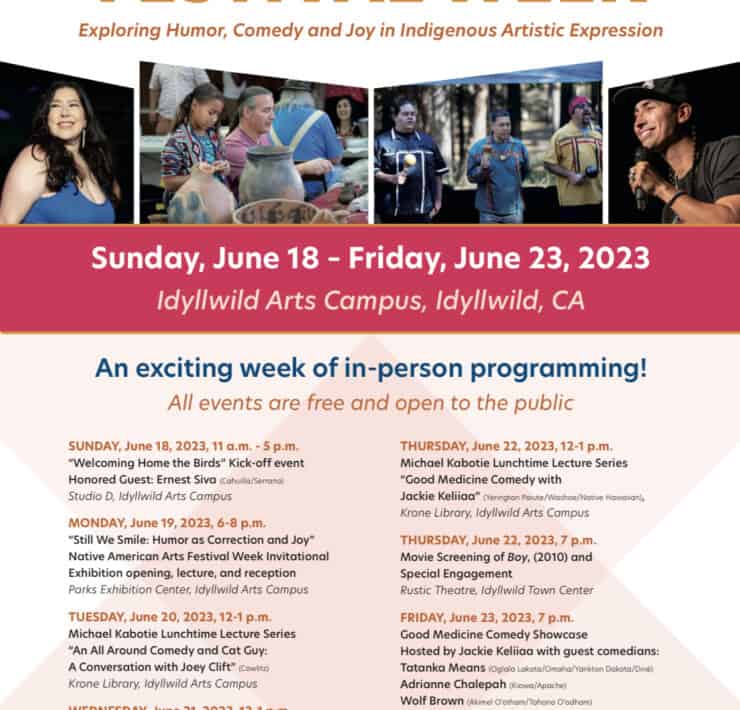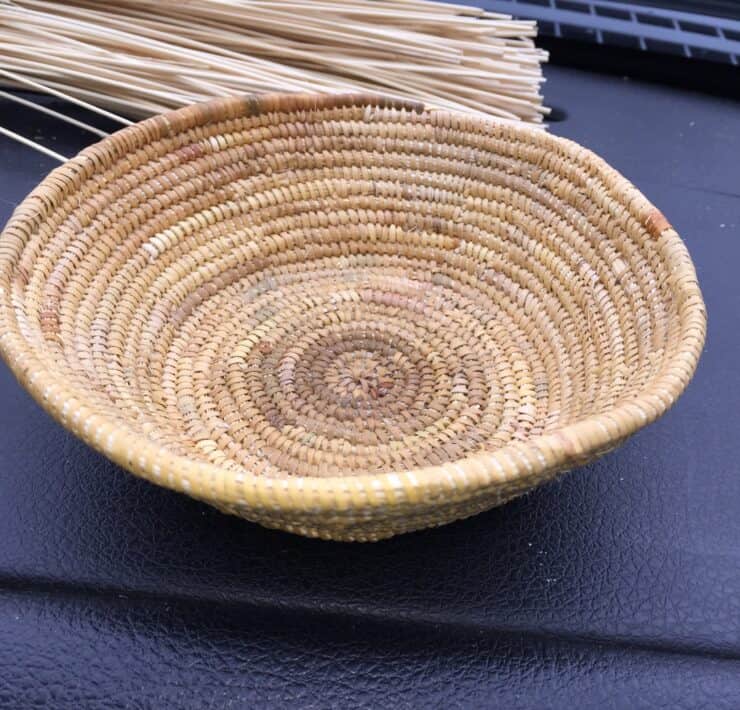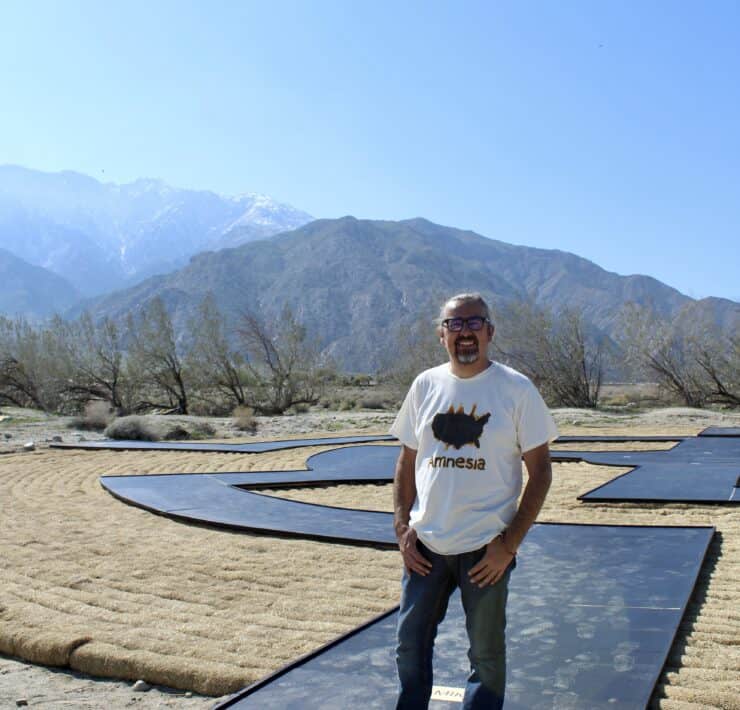It Only Takes One Man to Pull a Trigger: The Cahuilla Uprising of 1907-1912
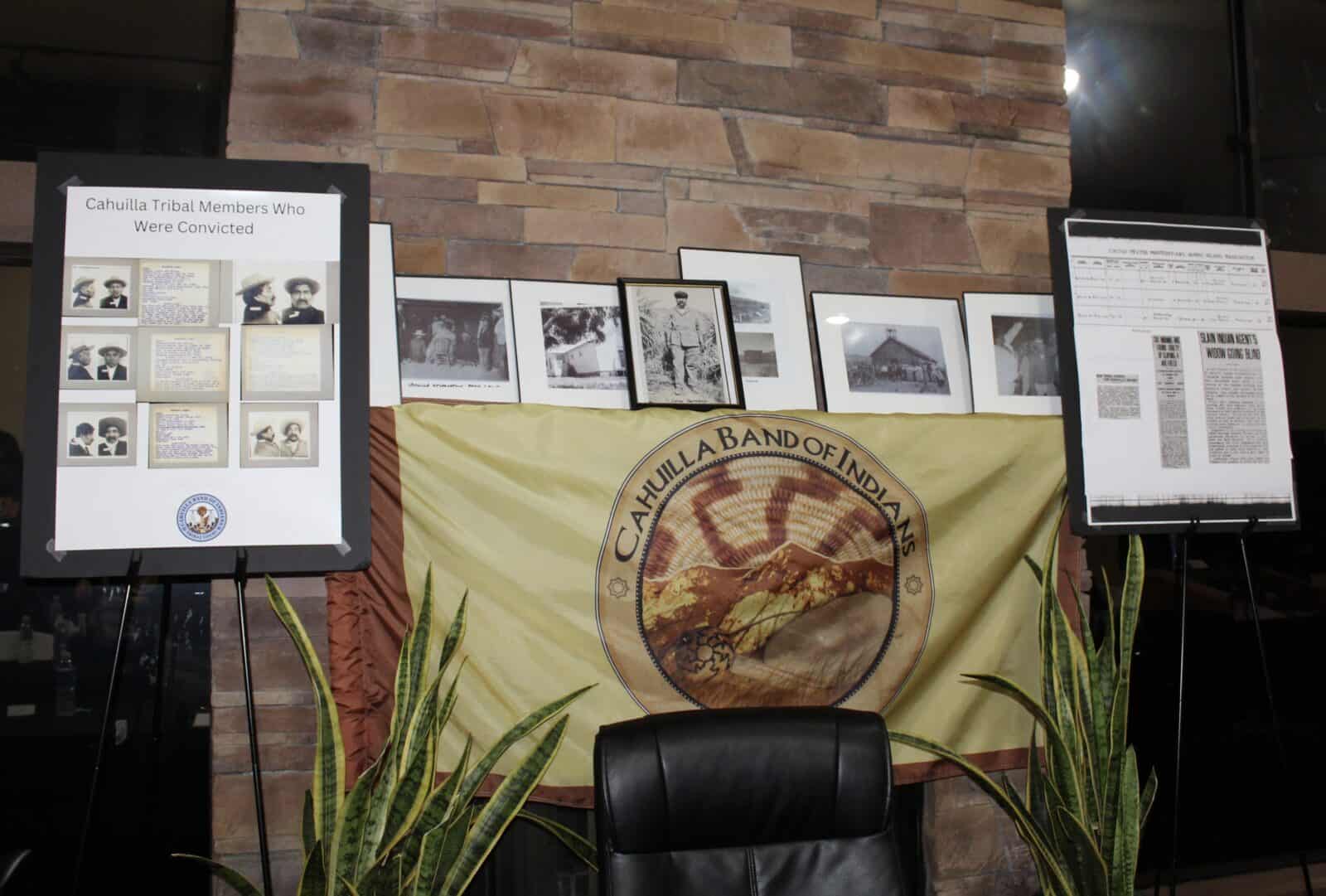
By Emily Clarke
This is the story as I was told it.
The shootout was a culmination of the Cahuilla uprising that spanned from 1907-1912. The inciting incident was a conversation held between Bureau of Indian Affairs Superintendent Agent William Stanley and a group of Cahuilla tribal members. Multiple Cahuilla men by the names of Leonicio Lugo, Ambrosio Apapas, Cornelio Lubo, Pablino Lubo, and Pio Lubo were involved and later convicted. The conversation, although not initially violent, quickly turned that way as long arising tensions grew more intense.
The Bureau of Indian affairs gave my tribe a handful of bulls to add to the tribal herd of cattle we had already established. However, afterwards, Superintendent Stanley returned with a BIA cattle brand, intending to tell Cahuilla people to brand the gifted bulls with the BIA’s brand. The current tribal Net (or traditional leader), Leonicio Lugo, refused to use the brand and said he had no problem giving the bulls back to the Bureau if they were not truly a gift. But this did not please Superintendent Stanley as he had no way of taking the bulls back and still demanded they be branded with the BIA brand.
Additionally, Stanley had planned to discuss business with another member of the tribe, about the reservation gate accidentally being left closed. This caused conflict between Stanley and Leonicio Lugo because Lugo attempted to settle the business with Stanley himself without opening the gate as Stanley requested.
Another source of tension came from the BIA-selected Indian cops that served as both local tribal members and law enforcement for the BIA. Oftentimes, these men were seen as “traitors” by the Cahuilla people but at the same time, walked in two worlds. Some say that when the shootout happened, one of the Cahuilla officers had been shot and was attempting to limp away when agent Stanley said, “Someone shoot that lousy Indian,” and the violence commenced again.
In the end, Superintendent Stanley was killed. Ten Cahuilla men were charged including Leonicio Lugo, our tribal leader at the time, and were put into what members described as “lion cages” and hauled away to await trial. Six of them then ten men were convicted of second-degree murder. It was noted that the Cahuilla tribe was seen having “war ceremonies” the night before Stanley’s killing, and those ceremonies were considered pre-meditation and conspiracy. As it turned out, the tribe had not spent the night planning murder, but partaking in traditional Bird Singing and Dancing, which is a social and celebratory practice still enjoyed today. The men were imprisoned at McNeil Island Prison in Washington State, over 900 miles from home. The absence of tribal leadership and of men who held important roles within the community left a hole in the Cahuilla tribe and many families were forced to make sacrifices in order to survive without them.
After serving somewhere between five and nine years, a few of the men returned to the reservation. Others, however, weren’t able to return. Because of the drastically different weather in Washington State and the living conditions within the prison, Pio Lubo became very sick and passed away while still serving his sentence. Pio was my great-great grandfather and due to his imprisonment and death, my great-grandmother grew up without a father.
To me, this is not just a story.
–
On November 19th, 2022, The Cahuilla Band of Indians held a panel discussion at the Cahuilla Tribal Hall in order to talk-through the story of Superintendent Stanley’s killing and express the importance of having a tribal court system. The panel consisted of Cahuilla tribal members Rose Ann Hamilton, Anthony Madrigal Sr., Gerald Clarke Jr., and Michelle Salgado, as well as scholar Tanis Thorne, who wrote an article about the incident that was published in 2004. Traditional foods as well as supplemental materials including court documents were provided for guests.
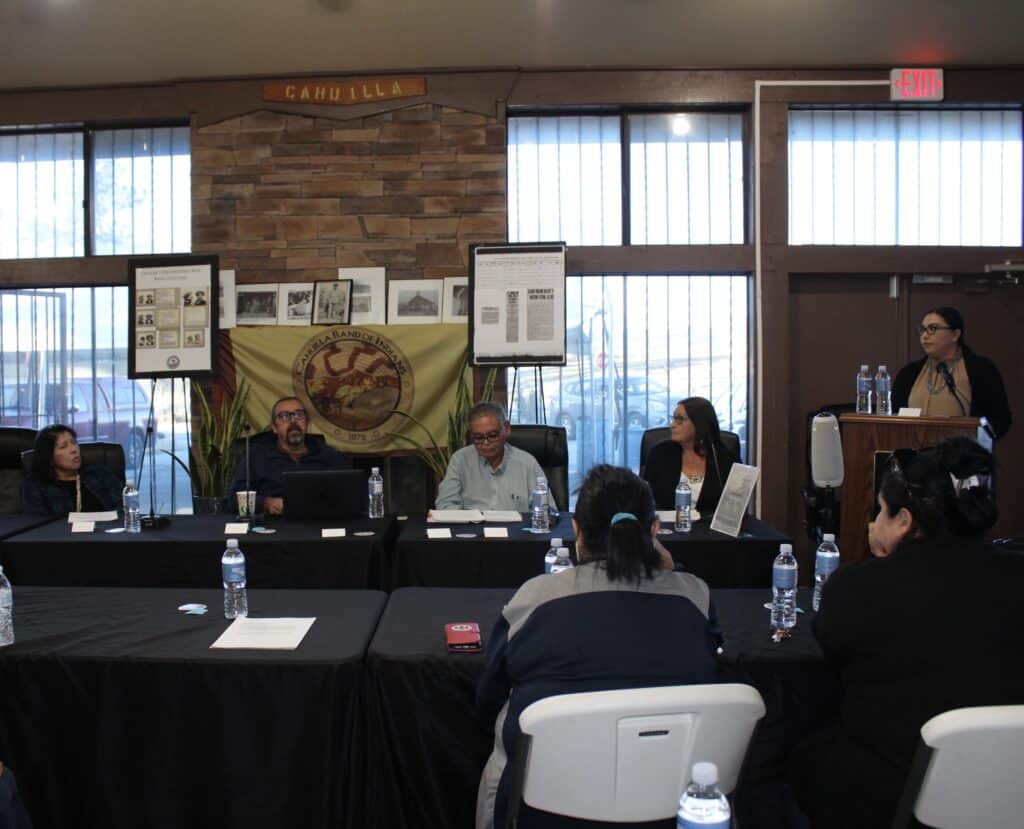
As the discussion begins, one thing becomes especially clear. The Cahuilla people have a strong history of self-rule and have always practiced self-governance. Traditionally, we had our own method for electing tribal leaders, solving tribal disputes, and even practicing tribal law. Cahuilla people were actively trying to stop the interference of the federal government on the reservation. However, the BIA didn’t like this, and that’s where the conflict began to arise. The Bureau wanted Native people to be “civilized,” however, what they meant by “civilized” was Americanized. They wanted us to be like them. That’s why the BIA saw our way of doing things as wrong and even too simplistic. However, the Stanley incident was much more than just the BIA forcing Native people to be like them. As Gerald Clarke put it,
“It wasn’t enough for them to take our land; they wanted us to be like them, they wanted our souls.”
Cahuilla is a small tribe, therefore each Cahuilla panel member had a somewhat personal connection to the story of the Stanley incident. In fact, some shed tears at the reality of losing a family member and the aftermath of losing important Cahuilla men.
“Sometimes it’s hard for us to tell these stories,” Rose Ann Hamilton said, “because these are our ancestors and our family members we’re talking about.”
Some might say that someone deserved to go to jail. Afterall, a violent act was committed, a man was shot. But I would argue that the true violence came after the shooting. Taking away our tribally-elected leader as well as five important men was not an act of justice, but a way to dismantle the Cahuilla government and preform small-scale genocide by tearing apart Cahuilla families. The shot that killed Stanley acted as a ripple effect. Afterwards, children who lost fathers were sent away to Boarding Schools, families who lost providers were forced to go off the mountain and work in dangerous environments, many of whom were killed because of their race. Imprisoning these five Cahuilla men was an act of colonization in itself as well as a message sent to Cahuilla people by the federal government. Furthermore, it only takes one man to pull a trigger. Why were six convicted?
Although the subject-matter was tough, the panelists effectively expressed not only the facts of what really happened within the Cahuilla Uprising, but also their own feelings on how it affected the tribe as a whole. The event also portrayed how important it is to tell our tribal stories and to validate history as we know it. There are many painful truths of our past as Cahuilla people, but with those truths comes the empowerment of telling our stories from our own perspective.




